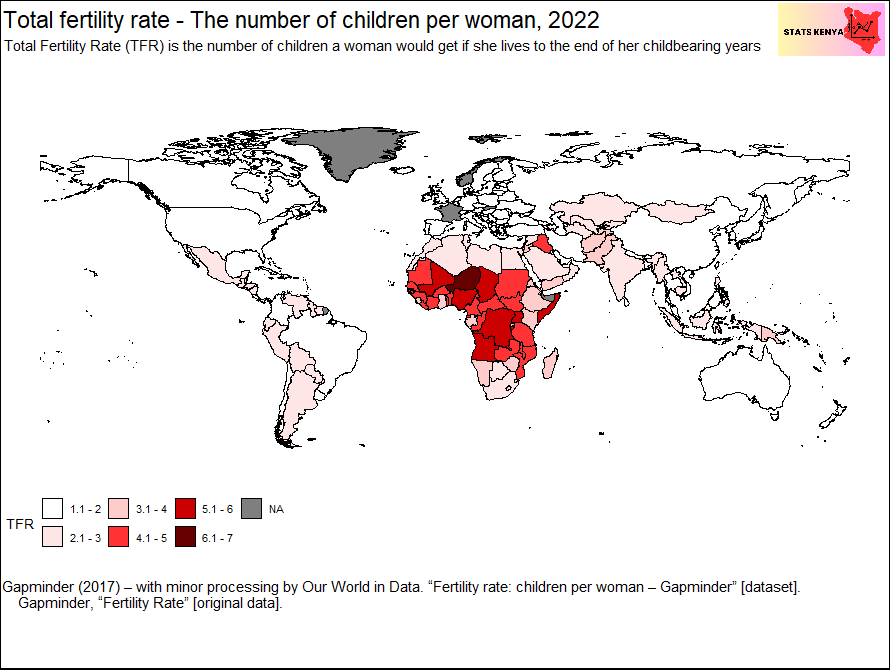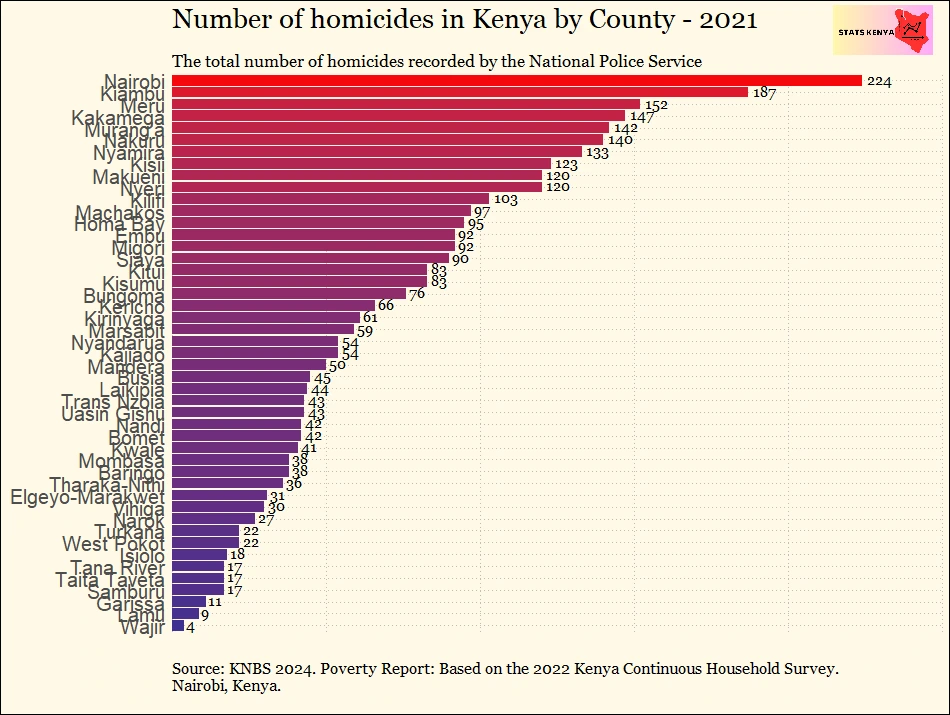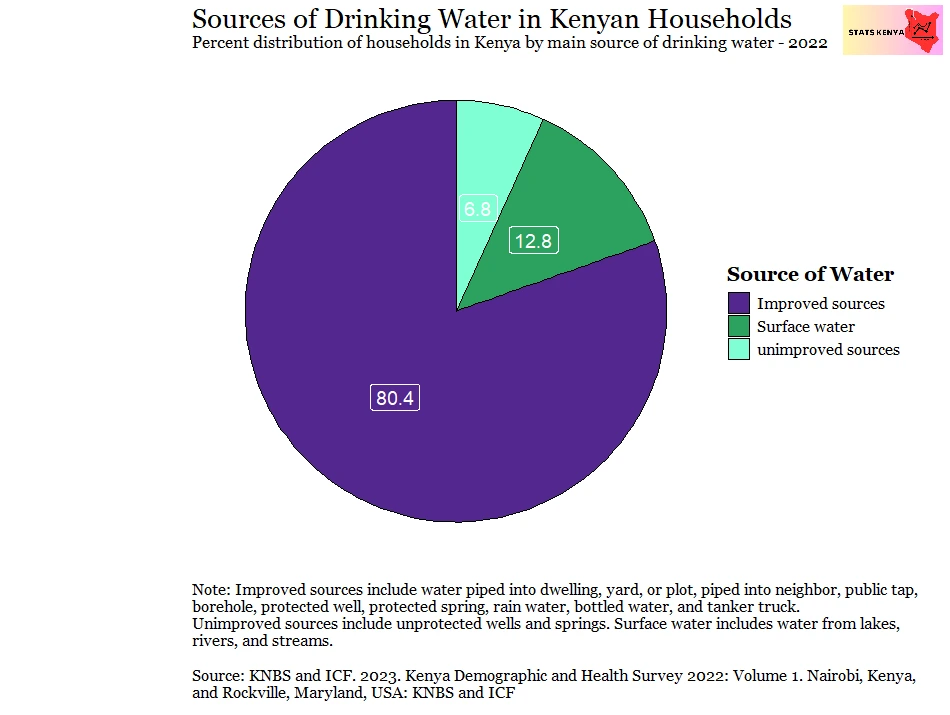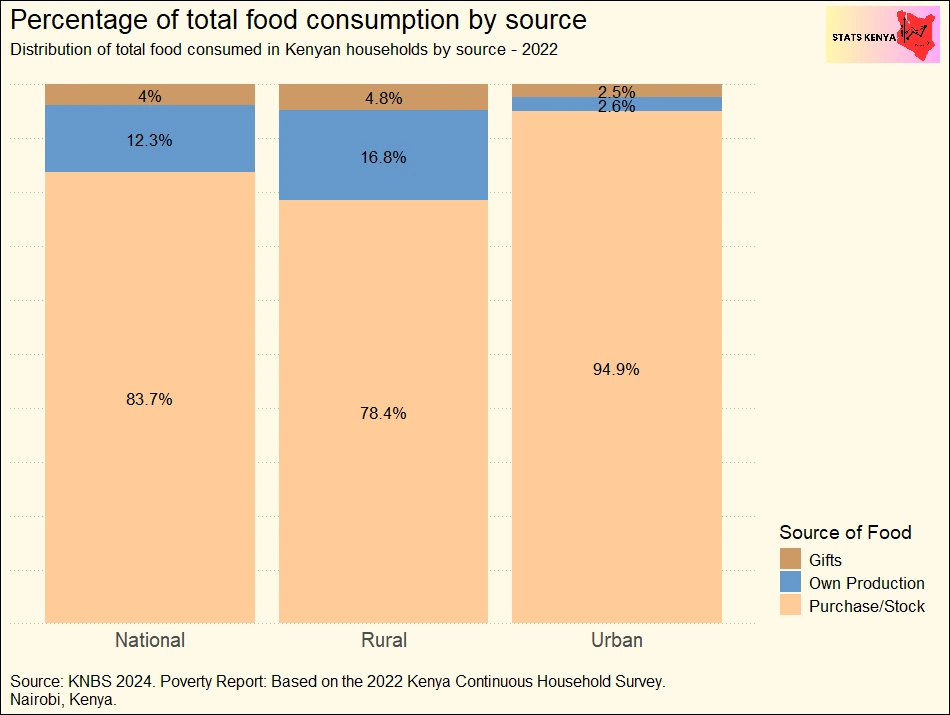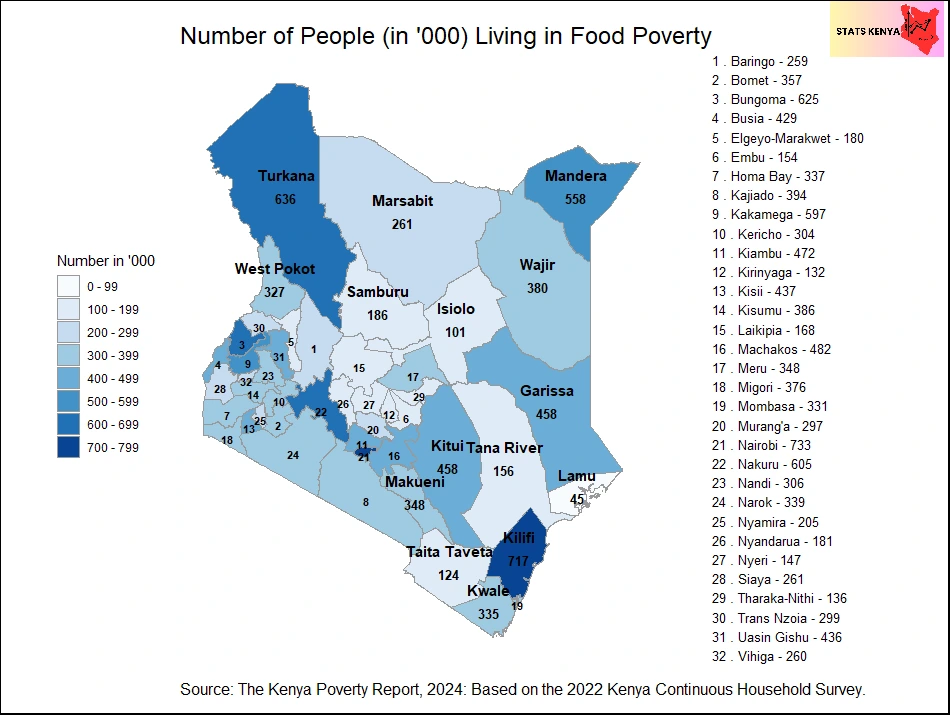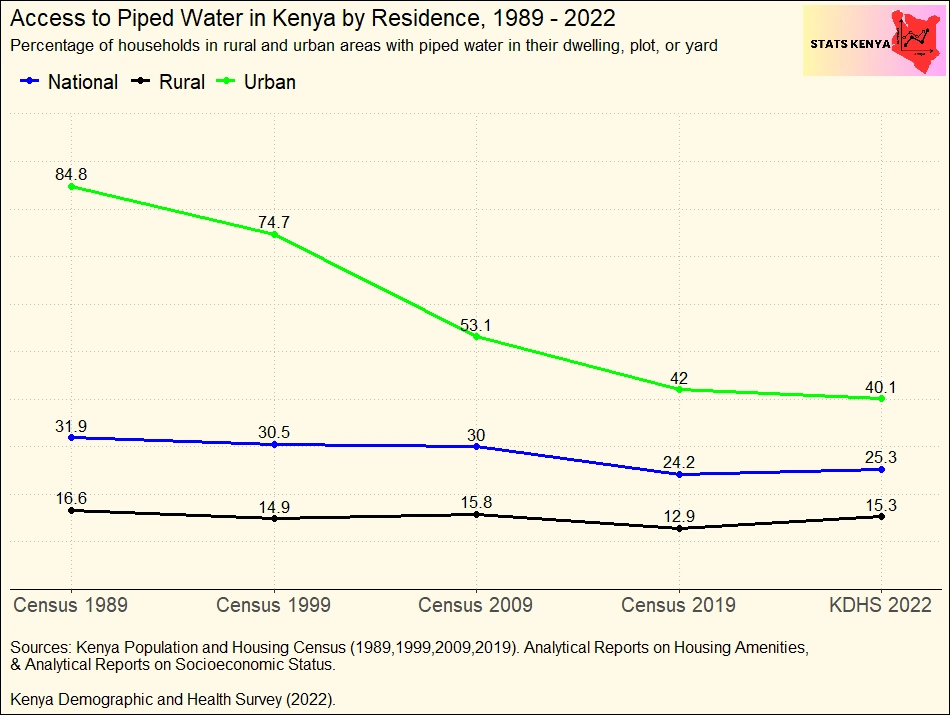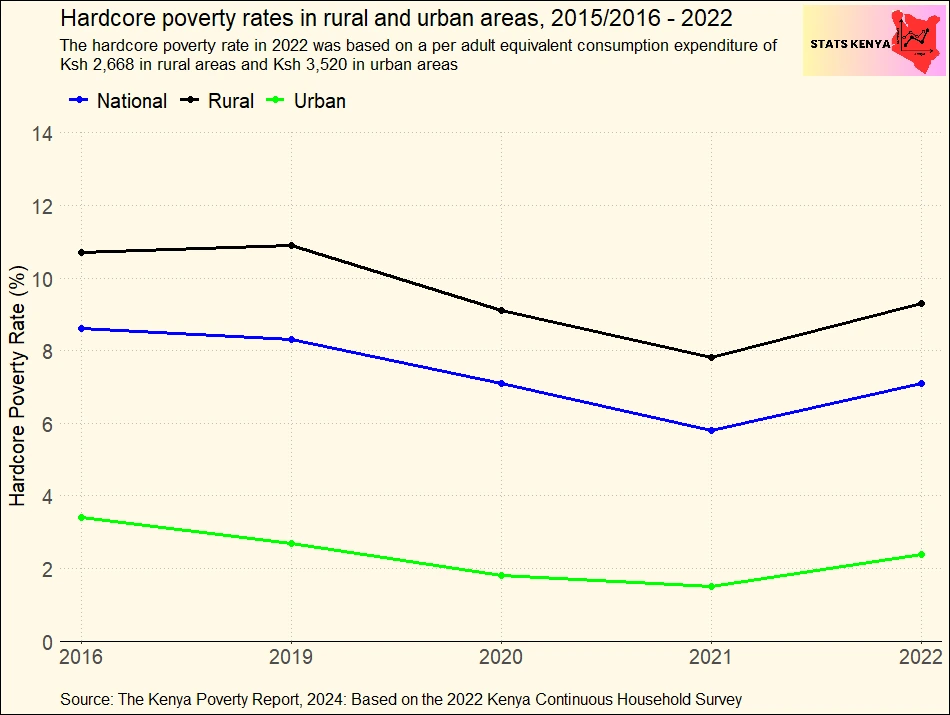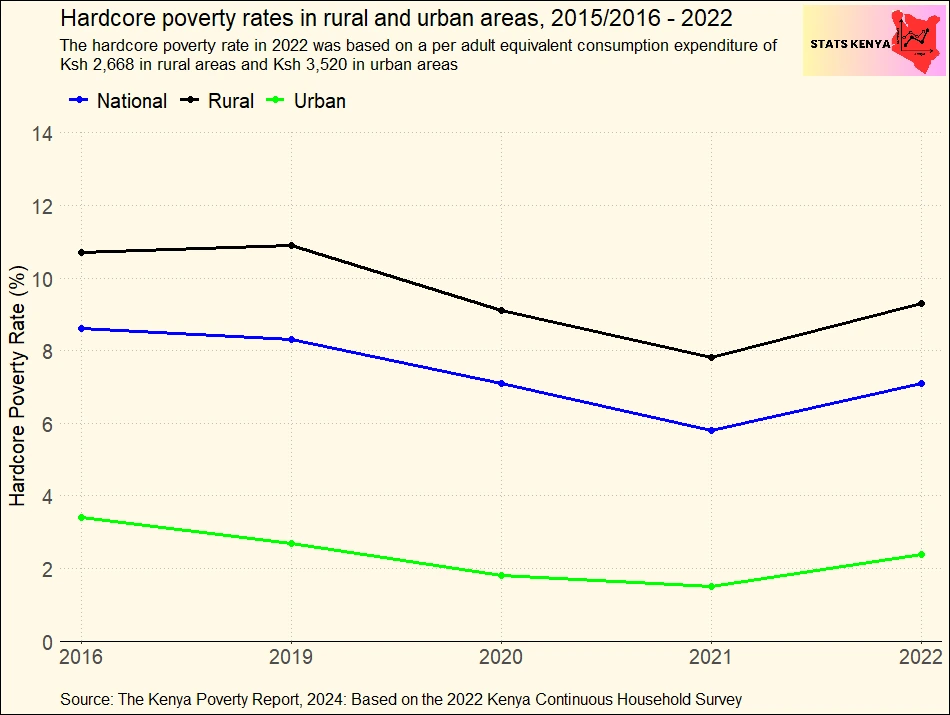The total fertility rate is the number of children a woman is expected to have if she lives to the end of her childbearing years. In Kenya, the fertility rate was 3.4 children per woman in 2019, meaning women get, on average, three to four children throughout their childbearing years.
How does Kenya’s fertility rate compare with neighbouring countries?
According to the 2019 census, Kenya had a fertility rate of 3.4 births per woman.[1] Moreover, the UN's world population prospects recently found that Kenya's fertility rate, based on the medium scenario, had dropped to 3.2 births per woman in 2024.[2]
As shown in the map below, Kenya has a lower fertility rate than its neighbours, which has massive implications for its future population growth. Kenya's 3.5 births per woman were lower than Uganda's (5.06 births), Tanzania's (4.65 births), Somalia's (5.71), South Sudan's (4.39 births), Burundi's (5.22 births), and Rwanda's (3.47 births).[3]
Kenya's fertility rate is falling fast.
UN data shows that Kenya’s fertility rate was highest in 1966, at 7.955 births per woman. However, it has since fallen to a low of 3.2 births per woman in 2024. Between 2009 and 2019, it dropped by 28.6% from 4.8 births per woman.[1] As the chart below shows, Kenya's fertility rate will continue to fall.
For instance, Kenya's fertility will drop below three births per woman in 2028, reaching 2.992 births per woman. It will fall further, going below two births per woman in 2075.[2]
Fertility rates in Kenya differ by area of residence
Women living in rural areas have a much higher fertility rate of 3.8 births per woman than those living in urban areas at 2.9 births per woman.
This is especially true for a county like Nairobi, which is entirely urban and has a fertility rate of 2.5 births per woman. Mombasa County, which is also predominantly urban, has a fertility rate of 2.9 births.[1]
Despite being rural, Kisii, Nyamira, and the Mount Kenya region have the lowest fertility.
Some rural counties in Kenya have significantly lower fertility rates than their peers. In 2019, Meru, Tharaka Nithi, and Embu counties all had a fertility rate of 2.9 births per woman. Mombasa, a purely urban county, had the same fertility rate of 2.9 births.
In Central Kenya, Kirinyaga and Kiambu both had fertility rates of 2.7 births per woman. Nyeri, on the other hand, had a fertility of 2.9 births.
In lower Eastern, Makueni and Machakos had fertility rates of 2.8 and 2.7 births per woman, respectively. In Nyanza, Kisii and Nyamira had fertility rates of 2.8 and 2.7 births per woman, respectively.[1]
Counties in the former Northeastern province had the highest fertility rates.
These include Mandera, Wajir, and Garissa. The total fertility rates in these counties were eight children per woman in Mandera, 7 in Wajir, and 6.7 in Garissa.
Northeastern counties are ethnically and religiously homogenous, with cultural and religious factors such as polygamy contributing strongly to higher fertility in the region.
The prevalence of teenage pregnancies in these regions also contributes to the high fertility.
Lower education attainment is associated with higher fertility rates in Kenya.
Strong evidence exists that higher education attainment correlates with lower fertility rates. In Kenya, the 2019 census established that those without education had the highest fertility rate of 4 births per woman. On the other hand, those with a tertiary education had the lowest fertility rate of 2.8 births per woman.[1]
The DHS, on the other hand, shows that those with no education had a fertility rate of 6.3 births per woman, compared to a fertility of 2.8 births in women with more than secondary education.[4]
Data from Barro and Lee highlights the causative relationship between average years of schooling among women and fertility rates. In 1950, the average years of schooling in Kenyan women was 0.7 years, and the fertility rate in that period was 6.4 births per woman.
In 2020, the average years of schooling in Kenya increased to 7.39, and the fertility rate declined to 3.36 births per woman. The data suggests that as Kenyan women gained more education, their fertility rates declined.[5]
Child marriages lead to higher fertility rates among Kenyan woman
The number of children a woman has will be influenced directly by the age at which she first engages in sexual intercourse as well as the age at which she marries. The earlier a woman marries, the higher her fertility will be.[6] According to the 2019 census, 4.1% of Kenyan girls aged 12 – 15 and 6.1% of those aged 12 – 18 were married.
These girl-child marriages contribute significantly to the rate of teenage pregnancy since girls who marry early become pregnant at very early ages. Adolescent pregnancies, on the other hand, raise the age-specific fertility rates of women of that age group.
In 2019, teenagers in counties with higher rates of child marriages also had higher fertility rates. For instance, the fertility rate of girls aged 15 – 19 in Kenya was 53 births per 1,000 teenagers. However, some counties had much higher rates, such as Mandera at 162, Wajir at 117, Marsabit at 113, and Turkana at 102 births per 1,000 teenagers.
Looking at girl-child marriages in these counties, we find that they had higher rates than other counties. Take, for example, Mandera County, which had a child marriage rate of 13.6% in 2019, the highest in the country.
See Also
- Kenya Population Prospects 2024 – 2100
- Crude birth rates in Kenya by county
- Child marriages in Kenya by county
- Child marriages and fertility rates
- Teenage pregnancies by county
References
[1] 2019 Kenya Population and Housing Census: Analytical report on fertility and nuptiality
[2] United Nations, Department of Economic and Social Affairs, Population Division (2024). World Population Prospects 2024, Online Edition.
[3] Gapminder (2017) – with minor processing by Our World in Data. “Fertility rate: children per woman – Gapminder” [dataset]. Gapminder, “Fertility Rate” [original data].
[4] KNBS and ICF. 2023. Kenya Demographic and Health Survey 2022: Volume 1. Nairobi, Kenya, and Rockville, Maryland, USA: KNBS and ICF.
[5] Barro and Lee (2015); Lee and Lee (2016) – with major processing by Our World in Data. “Average years of schooling (women aged 15–64)” [dataset]. Barro and Lee, “Projections of Educational Attainment”; Lee and Lee, “Human Capital in the Long Run” [original data].
[6] Onagoruwa, A., & Wodon, Q. (2018). Measuring the impact of child marriage on total fertility: A study for fifteen countries. Journal of Biosocial Science, 50(5), 626-639.

